Browsing through the stores and the whole market, in general, can be exciting, but also a little bit overwhelming. It is arguably the worst and the most difficult when you do not know much about the commodity you are hunting for, which is usually the case when people are buying kayaks.
As a newcomer to the activity and someone who wants to make it their favorite hobby, everything is new, unfamiliar, and perhaps even a little bit scary. But do not worry, that is a very normal feeling and something every kayaker goes through.
While it is true that buying your first kayak does seem like an impossible choice at the start, it is actually quite easy. All you need to know is the basics and it instantly becomes much more straightforward.
And the most important basic piece of information you need is the size of the kayak. Which one exists, which one do you need, and why?
The most straightforward distinction is between short and long kayaks, which are of course used in different situations and by different types of kayakers.
In this article, we talk about short kayaks versus long kayaks and which one you need. Buying a kayak is a long-time investment as not a lot of people have a few at a time that they reach for interchangeably.
As a beginner, you get your first one and use it for years, meaning your initial choice needs to be right. If you feel like you need help, keep reading the article. By the end, you will have a much better understanding of what makes a kayak short, what makes it long, and why different lengths even exist.
Table of Contents
ToggleWhat Are Short Kayaks?
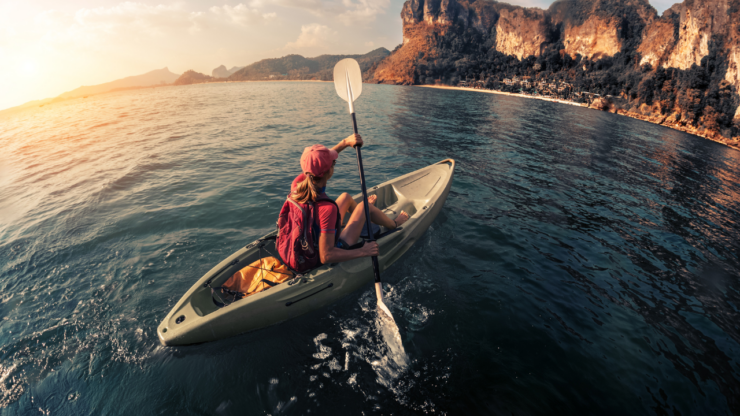
In the general sense of the word, shorter kayaks are those that are between 8 feet and 10 feet in length. According to many experts, any kayak under 12 feet in length is also sometimes referred to as short.
The easiest and most commonly used system to distinguish between different kayak types is the length, and 8-foot and 10-foot kayaks are the shorter options. Kayaks are also classified as 9 feet and 11 feet long.
Most kayaks on the market are around 10 feet long, which means that they are also the choices for the majority of paddlers. While they are so widely present, not all of them are good for beginners and are actually preferred by veteran paddlers, especially those who regularly hit the whitewater rapids.
Single-person fishing kayaks are typically around 10 feet long, while whitewater options are shorter.
What are Long Kayaks?
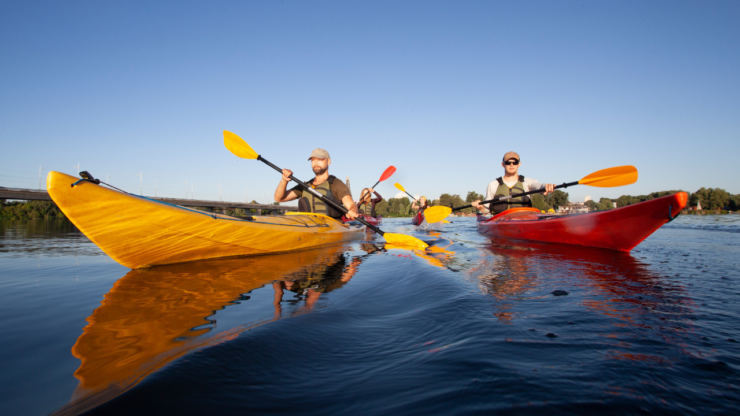
As mentioned earlier, shorter kayaks are those that are between 8 feet and 10 feet in length. Since this is the easiest and most commonly used system to tell apart different kayaks it is also used for longer varieties.
Longer kayaks are those between 12 feet and 14 feet in length. Of course, any kayak over 14 feet, of which there are not that many, is also considered a longer kayak. There are also kayaks that are classified as 13 feet long.
Kayaks between 10 and 12 feet are somewhere in between and they are usually hybrids anyway or categorized based on which length they are closer to. Touring, recreational, and multi-person kayaks are usually longer, around 14 feet in length or even longer.
A lot of kayaks are around 12 feet and they can really be used in any situation, from fishing and hunting to recreation and relaxation.
Differences Between Short and Long Kayaks
We cannot talk about the differences between these kayaks in general because there are many specific features of both that the length impacts greatly. Therefore, it makes much more sense to divide the differences and make a side-by-side comparison with each different feature/specification.
Speed and Efficiency Differences
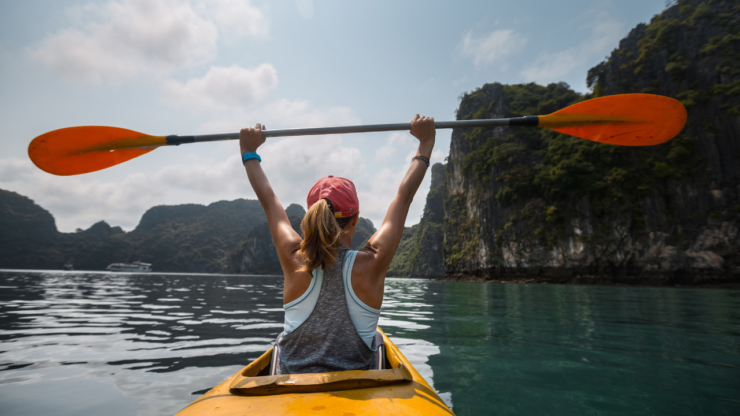
The length of the kayak matters dearly when maximum potential speed is concerned. Paddling is not something that needs to be very quick and as a paddler, you never really need to go very fast, apart from professional races of course.
However, the gliding speed at which the kayak moves through the water and the efficiency and ease of your paddle strokes are all affected by the kayak’s length.
In general, longer kayaks have advantages over shorter models as they allow for easier paddling and therefore greater speeds. First of all, longer kayaks offer less drag and move faster through the water. This is because longer kayaks are also usually narrower.
However, out of two equally wide kayaks, the longer one will be faster and more efficient, particularly on longer distances. Shorter kayaks can never achieve more than 2 mph, while larger can travel at 4 mph or even 5 mph or 6 mph.
Stability and Maneuverability Differences
If the previous section had longer kayaks as the clear winners because of their combination of length and narrowness, the stability and maneuverability battle will balance the scales. Shorter kayaks are the ones that thrive here as they are much more stable as well as more maneuverable.
These things are important for much specific kayaking uses, like fishing and hunting for example. Also, the fact that they turn more easily is crucial for narrow spaces and quick moves that are typical of whitewater and rapids.
The fact that longer kayaks need more effort to turn should be obvious. They require a bigger pivot and more paddling strokes to make a U-turn, or even a slight turn to the side. While they are great for fast straight-line paddling, sharp turns are not their thing.
If you want this, pick a short kayak. Beginners usually go for shorter varieties because they are stable and easier to turn. They handle rougher conditions much better, especially strong wind gusts and larger waves.
Storage Space and Comfort of the Cockpit
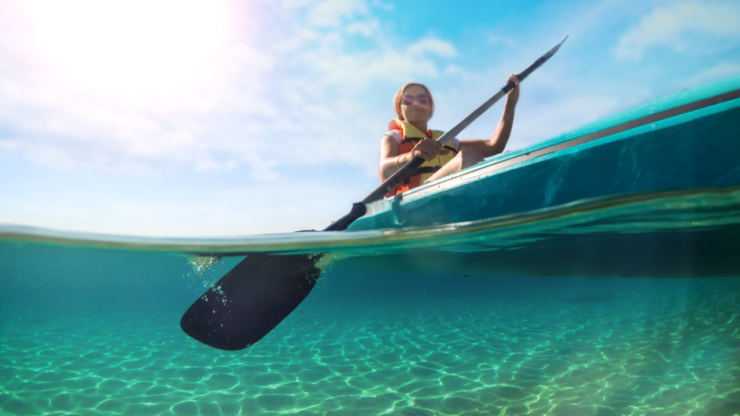
In about 99% of cases, the bigger the kayak, the more space it has both for extra passengers and for storage. It is a no-brainer really, but it needs to be mentioned. Not all storage is the same however, and not all kayaks make use of the same type of storage.
As it turns out, total length does not always directly translate to more space with certain kayak types.
It is much more important here whether the kayak is a sit-inside variety or a sit-on-top variety. The former have some depth to them and a dedicated seat in the cockpit. You sit for the entirety of the kayaking session with your knees bent in front of you.
The seat is usually comfortable, ergonomic, adjustable, and removable, with cushioning and a backrest. These kayaks are typically shorter, between 8 and 10 feet in length in most cases.
On the other hand, the sit-on-top variety is wider but longer, which disrupts the aforementioned formula of long kayaks being narrower. It matters what type of kayak it is also, not just what length it is.
Sit-on-tops are bigger than sit-insides, they offer more space, and they have a higher sitting position in chair-like seats. Also, they do not have cockpits and they resemble boards instead of boats/canoes.
Sit-inside kayaks have ample room around the seat and several watertight hatches for dry storage. They also have enough room in front and back for a crate, bag, or cooler. Sit-on-top kayaks usually have more room for equipment since they are wider.
They have more bunge tie-down sections and more dedicated features like cup holders, rod holders, and carry handles. If you prefer open-space storage, pick the sit-on-top kayaks with are usually bigger. If you want storage under the deck, sit-inside options make more sense.
Transport and Storage
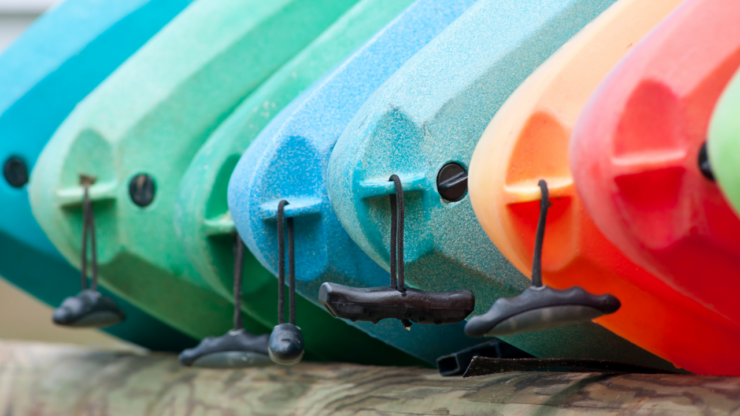
Last but not least, you have to also think about how and where you will store and transport your kayak. The smaller it is, the easier it will be to keep at home as well as to fit on the roof of your car, in the car, or on the trailer.
Larger kayaks are usually also heavier. There do exist foldable and inflatable models of 14+ feet paddling vessels, but those also come with their own disadvantages and other advantages.
If you need size, just remember that you will need more room in your garage and it will be a struggle to bring it to the water every single time. Most modern paddling vessels are made of a single pice of polyethylene plastic, meaning they do not come apart and cannot be disassembled.
This is a good thing but also not that suitable for ease of access, portability, and carrying. However, if you can figure this out well before purchasing the kayak, it should not present a big problem for you. Certain big kayaks are also very lightweight, but usually expensive as well.
Balancing between various choices seems to be a running theme as you can see. It always comes down to your basic preferences like how often you will go kayaking, what you want to do while in the water, and who you will be going with. Your geographical location also matters due to weather conditions, and your proximity to the closest bodies of water is crucial.
Adelaide Gentry, a seasoned kayaking enthusiast and expert, is the driving force behind KayakPaddling.net. With over a decade of experience navigating the world’s most challenging waterways, Adelaide combines her passion for adventure with a deep knowledge of kayaking to provide insightful and practical guidance for paddlers of all levels.
Related Posts:
- Heavy Duty Fishing: 11 Best Rods And Reels For Big Fish 2024
- 16 Best Kayak For Beginners 2024 - Kayaking Adventure Gear
- 10 Best Kayaks For Camping 2024 - Lightweight and…
- 12 Best Beach Wagons & Carts 2024 - For All-Terrain
- 10 Best Fish Finders Under $200 2024 - Top Affordable Picks
- 10 Best Sit-Inside Fishing Kayaks 2024 -…












